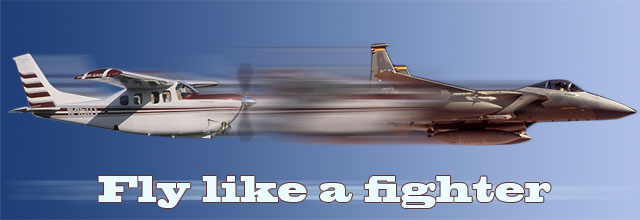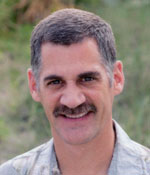
Night flying has always had its unique charms. It seems to bring out new sights and sounds that aren’t around in the daytime. At altitude, away from any city lights, covered by a bubble canopy in an F-15 or T-38, I would always look up and admire the complexity of the sky. I was awed flying a T-38 in the middle of Oklahoma when my instructor told me that the glow to the south was from the lights of Dallas, more than 200 miles away. Seeing the full afterburner plume behind another F-15 with a black night as a background is another one of those images indelibly inked on my brain.
As for the sounds, as a student pilot on my T-38 night solo flight, I must have had bionic ears because I could hear engine whine, audio background noise frequency shifts, and possibly the electrons flowing through the electrical system in the jet--sounds I never noticed during the daytime. I could probably make a scientific case that with a diminished sense of sight at night my other senses, including hearing, adjusted to peak performance. But I know better; it was just young student pilot nerves.

Some of the most challenging flying I have ever done has been at night, in the weather, and in formation. During one dark night over Germany, I tried to be as smooth as possible as lead on a night air refueling mission. I rejoined my four-ship of F-15s into close formation climbing through 10,000 feet as we entered the clouds. We would stay in the clouds all the way up through our rendezvous and refueling with the tanker at FL240. I found the tanker on radar, and as I closed on it from behind at FL235, I wondered if I would ever see it in the clouds. About a half mile behind it I faintly saw its beacon, and about 500 feet in trail felt comfortable enough to clear my three wingmen off of my wing to join the tanker’s wings. Since my wingmen were still looking sideways at me and only saw a lot of clouds, they were very hesitant to leave my wing until a quick glance forward showed them the tanker directly in front of us.
As summer time is now ending, many of you who maintain your 90-day night landing currency welcome the earlier sunset times so that you don’t have to stay up so late getting in your required landings. But there is another option. One of my most memorable night flights was a pre-dawn takeoff in a T-38. Yes, it felt very early doing a preflight in the dark, and it did feel a little weird doing a night takeoff at the beginning of my day. At 20,000 feet cruising in the military operations area, when the sun finally broke through the horizon, time seemed to stop for a moment as my senses tried to absorb all the sights and sounds around me. The freedom of flying offered me yet another amazing view of the world around us.
If you’ve never flown a night sortie in the morning or watched the sun rise, maybe now is the time.
Larry Brown of Colorado Springs, Colo., is a retired Air Force F-15 pilot who is using the lessons he learned as a fighter pilot as a GA pilot in his Cessna P210. Brown, who has 2,600 hours total time during his 32 years of flying, also was an instructor pilot and flight examiner in the Air Force T-38 and instructor pilot in the T-52, the military’s version of GA’s Diamond DA40. See previous installments of “Fly like a fighter.”
Larry Brown of Colorado Springs, Colo., is a retired Air Force F-15 pilot who is using the lessons he learned as a fighter pilot as a GA pilot in his Cessna P210. Brown, who has 2,600 hours total time during his 32 years of flying, also was an instructor pilot and flight examiner in the Air Force T-38 and instructor pilot in the T-52, the military’s version of GA’s Diamond DA40. See previous installments of “Fly like a fighter.”



